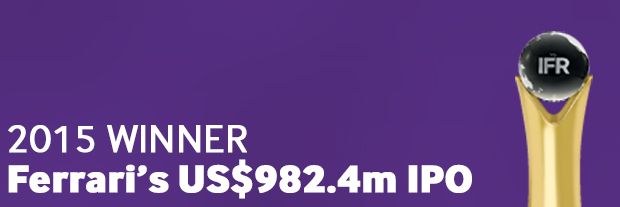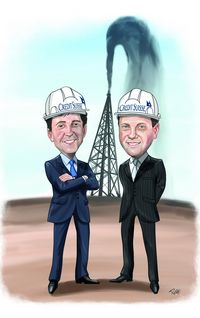Hot laps
Call it extreme due diligence. Ahead of Ferrari’s US$982.4m New York listing in October, Wall Streeters buckled up in production cars driven by Formula 1 test drivers and hurtled around Ferrari’s private race track in Maranello at speeds of up to 300km/h.
The adrenalin rush of those “hot laps” did not stop there.
The most high-profile US IPO of 2015, Ferrari overcame a perilous new issue market to achieve pricing at the top of guidance and a premium multiple not usually associated with carmakers.
The final price of US$52 a share valued Ferrari above many luxury brand names and well above the low single-digit multiples of mass-market carmakers.
Parent Fiat Chrysler Automobiles sold 10% of Ferrari in the IPO and plans to distribute the rest to its shareholders (excluding 10% owned by Piero Ferrari, son of founder Enzo) in early January.
The value creation was stunning, especially in light of FCA’s historically depressed market valuation.
“I have always had the view this was the most valuable asset sitting inside Fiat,” said Sergio Marchionne, FCA’s chain-smoking and straight-talking CEO of 12 years, who doubles as chairman of Ferrari. He was talking in an interview with IFR in November.
But Ferrari’s status as a household name could not change the fact that six of the seven IPOs prior to its deal were priced below range or were withdrawn.
“There were fundamentally difficult positioning elements to telling the story and extremely tough market conditions, both broadly and specific to the IPO market, that made the execution very challenging,” said UBS’s Americas ECM head James Palmer. UBS was sole global coordinator, and a joint bookrunner alongside Bank of America Merrill Lynch, Allen & Company, Santander, BNP Paribas, JP Morgan and Mediobanca.
Marchionne and the banks had to convince investors that rather than the average 2.9 times EV/Ebitda multiple commanded by Ford, BMW, and General Motors, Ferrari could justify somewhere between the 10.2 times average of pure luxury brands such as Prada, Burberry and LVMH and top-end “aspirational comp” Hermes at 17 times.
Bankers concluded that emphasising Ferrari’s exclusivity, pricing power and customer loyalty would underscore the luxury credentials. Ferrari highlighted plans to grow Ebitda by 50% to €1bn in 2019 by relaxing self-imposed supply constraints.
Underwriters’ bookbuilding strategy leant heavily on the notion that the book needed to be fully covered almost from launch in light of market conditions. The deal achieved oversubscription just two hours after launch late on Friday, October 9, and orders grew steadily throughout the roadshow, which included meetings with 500-plus investors and 10 large group events.
Marchionne is convinced Ferrari saw the right investors. “It would have been very easy for us to go through our Rolodex at Ferrari and effectively approach the top 50 customers of Ferrari,” he said. “That would have been the wrong answer.”
The decision not to push for above-range pricing was wise, though the stock has still struggled in its early days. The shares opened up 17% on their first trade and ended their debut day up 6%, but in mid-November had fallen to US$46.
To see the digital version of the IFR Review of the Year, please click here .
To purchase printed copies or a PDF of this report, please email gloria.balbastro@tr.com .



